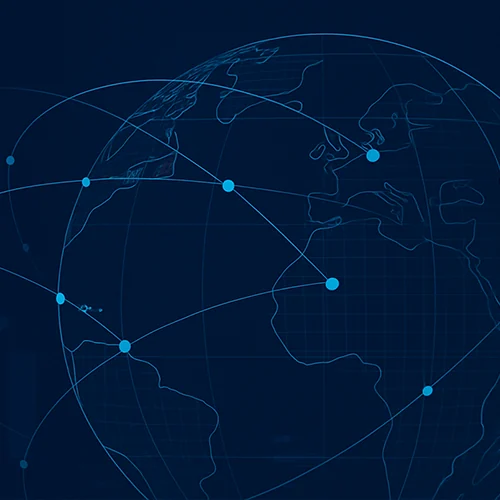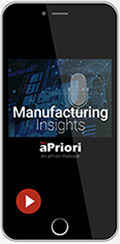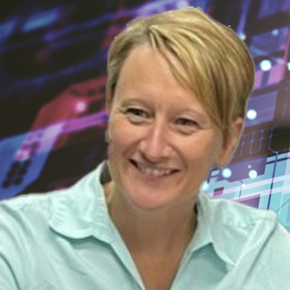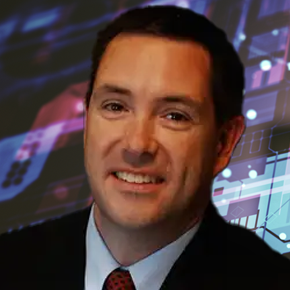February 12, 2025
Procurement Best Practices from Tesla and Beyond
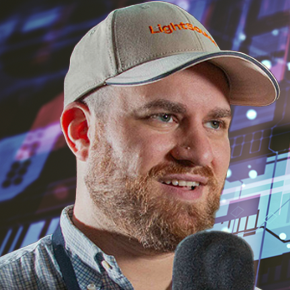
Transcript
When you’re on the cutting edge of innovation and performance, a simple procurement solution just isn’t going to cut it. It’s not enough anymore to just put quotes out to bid and choose the lowest-price supplier. Today’s advanced procurement teams need to consider complex trade-offs in a dynamic environment that’s always changing. To learn how the top procurement teams are succeeding in this today, we’ve brought in Spencer Penn, a veteran of sourcing at Tesla and now the CEO of LightSource. Spencer Penn sat down with aPriori’s Director of Product Marketing, Chris Jeznach, for a series of talks that span a wide range of procurement issues, including the challenges that teams are facing today and how the top teams are finding innovative solutions in software and collaboration. Here’s the first in a series of three conversations between Chris Jeznach and Spencer Penn.
Chris Jeznach: I’m here with Spencer Penn, CEO of LightSource. Can you give a little background on yourself and the problems you’re solving at LightSource?
Spencer Penn: Sure, I’m happy to. I’m the CEO and co-founder of LightSource. We are a procurement operating system for the modern era. Our customers are largely in the direct material space, but also the strategic indirect space. And to start with a little bit of background, I actually spent most of my career at Tesla. I helped lead a program there called the Model 3, which was our first mass-market electric car.
Lessons from the Model 3 Program at Tesla
Spencer Penn: Working on the Model 3 program at Tesla, there was a whole range of difficulties in scaling that program. We’re going from 1000 vehicles per week to 10 million over the life of the program, not even including the Model Y which was based off the Model 3 architecture. And so there were challenges in the design, in the engineering, in sourcing, in manufacturing, in delivery, and post-sales service. And one of the big pain points that we had was that we were sourcing $30 billion of car parts on Excel spreadsheets and emails.
Early Sourcing Challenges at Tesla
- Going from 1000 to 10 million vehicles
- Deliver and Post-Sales Service
- Sourcing $30 Billion in car parts on Excel spreadsheets
Spencer Penn: The way that procurement works is that someone designs the vehicle and then they send it to the engineering team who specs it out in CAD and SolidWorks, making the parts real. And then the procurement team goes and finds the vendors to manufacture the parts, whether they’re custom or off the shelf, building up what’s called a bill of materials from the engineering BOM to the manufacturing BOM. Then it gets passed to manufacturing to go build the car and then downstream to the sales team.
We were doing all this sourcing on Excel spreadsheets and emails. And there was a sort of a slow realization that this could be a universal problem and not just a Tesla problem. Because I tried to find some software that we could use to help us do this a bit easier and faster. And I was just very disappointed by what I saw. It felt like there were sort of two bad options. One was to stick with Excel and email, which is kind of the devil we know. Or we could use a legacy provider – take a module from one of the big ERP teams and customize it – and then five years later and 10 million dollars later you end up with something that looks like Windows 95 that literally nobody would want to use. And so at a certain moment, years after leaving Tesla, I started to think: what would it look like if we went on our own and built something that’s easy to use and fast to deploy by procurement for procurement? That’s the adventure that we’ve been on with LightSource over the last few years.
The way that we got connected with aPriori was that we have mutual customers – aPriori does all of the cost modeling and should costing. Then companies actually have to go and bring it to market, and that’s where you need a really great sourcing operating system.
Different Tradeoffs Can Get to a Better Price
Chris Jeznach: A lot of our customers are in the automotive space and like you mentioned with Tesla they are using spreadsheets and email for modeling and tracking decisions. Are you finding that with your client base? Are they using these tools not only for procurement but for cost modeling?
Spencer Penn: The first thing I would say is that most procurement folks today are trying to think about cost as one of many factors. Margin is really important, and there are two big levers for improving your margin: you could double sales and double your profit, or you could reduce your costs through better sourcing and better negotiation by like 5%, and then you’ve achieved the same outcome. I think that’s a much easier path in my view.
2 Ways to Double Profit
- Double Sales
- Reduce Procurement Costs by 5%
Spencer Penn: The challenge is that if you think about margin improvement in the life of the procurement team, cost savings is only one of many metrics that you have to think about. The other critical metrics are things like reliability and quality from the supplier. Sustainability is also becoming a bigger factor now. And the diversification of the supply base, especially with concerns around global conflict. So if you’re a category manager, getting stuff cheaper is important, but if stuff doesn’t arrive then you’re in a position where you’re in real trouble because you’re stopping the line.
The way that people negotiate really depends. For a lot of the automotive companies and aerospace companies where they’re doing real scale manufacturing in addition to procurement, there will be this other team called cost engineering. They see a part and they’re thinking, all right, this is 1 kg of 4049 stainless steel – it needs to be turned and then machined and then polished, and then these screws need to be threaded. And they’re seeing the building blocks to build up a should cost model, or they use aPriori, and they arm the category manager with that information.
Now, the conversation from there can go in a lot of different directions. One of them is the supplier could look at it and say, “This is way off base. I’m not going to consider this and I’ll resend you the price I already submitted.” Sometimes the supplier is just padding the margin and they don’t want to actually have a conversation about the cost model. And other times it could be that there’s actual knowledge about the parts that the supplier has that maybe the category manager doesn’t have, or maybe there’s process steps that they haven’t really considered. At the end of the day, I think that a cost model alone is only half the equation. The other half is you need to get someone who will actually agree to make the thing for you and send it to you for that price. And then it’s inevitable that prices will change. Currencies shift, raw materials shift, labor rates shift. And so every quarter or every year, you’re going to have to update the price. You’re not going to want to re-source to a new supplier. So this kind of cost modeling tool allows you to have an informed conversation about what is a fair change. If steel goes up by 25%, that doesn’t mean that the part is now 20% more expensive, because maybe the steel price only made up half the cost of the part and the rest is value add service, at which point you look at the part and say, no, actually 25% is not the right cost increase, 12 and a half is fair based on the cost model. But you have to get to that level like you guys are with aPriori in order to see that kind of thing.
Chris Jeznach: Sometimes the challenge is just getting updated market data, so by using a tool that can automate market insights, that can really help the costing process. But one of the challenges to getting procurement teams detailed data from cost engineering is often how the organization is structured internally. When cost engineering reports into procurement often there’s a really good synergy between category managers and cost engineering. Sometimes, cost engineering might even report to finance, and so depending on how that company may be structured, there are different priorities of how cost engineering and aPriori might be able to be deployed or used.
But another area we see also early on is design engineers using the product to assess tradeoffs, such as changing materials or going to machine versus casting. My question to you is how early do you see procurement professionals and category managers working with engineering on tradeoff analysis? And what does that collaboration look like from the perspective of designing for cost?
Spencer Penn: That’s a really good question, and the obvious correct answer is not soon enough. I think there’s some McKinsey metric that says 80% of the cost variability is determined by the time the design is frozen. It’s sort of interesting because engineers are responsible for the ownership of a part – it’s their baby – they are the ones designing that seat structure or that foam trim or that rearview mirror. And there are specs that they want to achieve. The metrics that they think about will be things like performance and durability and heat resistance and mass. Mass is a huge one in the auto space, and it’s even 10 times more important when you’re talking about aerospace. It’s funny because at Tesla versus at SpaceX there were different guidelines for mass. At Tesla there was a certain dollar per kilogram trade-off between dollars and mass, where for a certain amount of money, we could just put more batteries in the vehicle and get more range because mass weighs you down. But for SpaceX, I’d heard the number was like 10 or 100 times what the fair value trade-off was for Tesla.
But the question you asked was a very clear one: How early do we see procurement engaging with engineering on NPI projects, new product introductions? And the answer is not early enough. Very often we will see that it’s sort of like a waterfall process that they use in software engineering, where one team completes a step and then passes it to the next team. In aerospace and defense, they won’t start sourcing until the design is fully frozen, but then there’s no opportunity to go back and make amendments.
I think one of the big secrets of Tesla’s success was the amount of cohabitation of engineering and procurement. We would run meetings all the time where we’d have the engineering leadership and the procurement leadership, or even at the lower levels, the engineering managers and the procurement managers getting together to talk through these things.
Secrets of Tesla’s Success
- Early collaboration between engineering and procurement
- Clear trade-off analysis between mass and cost
- Collaboration with suppliers before designs were locked-in
